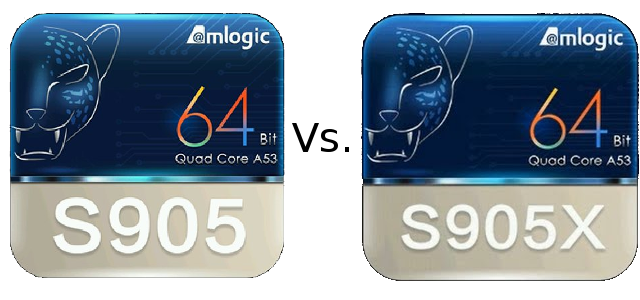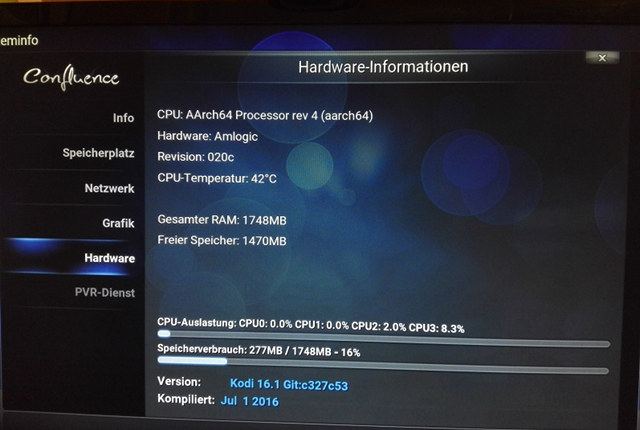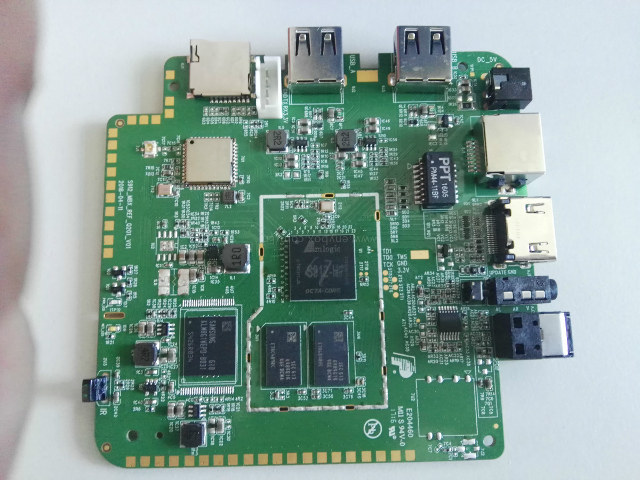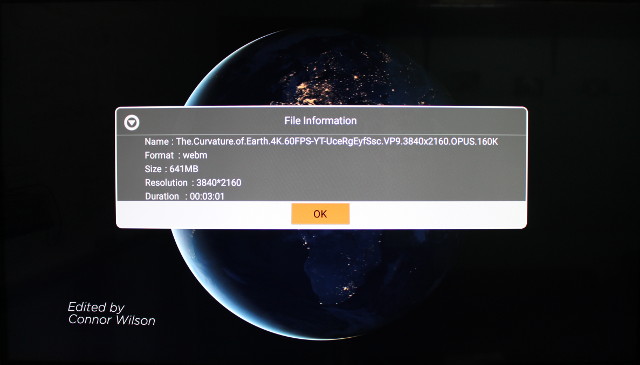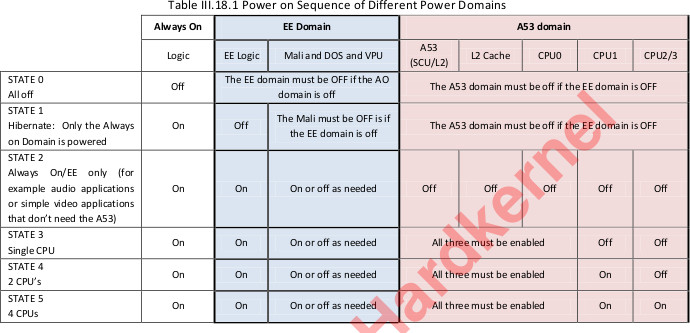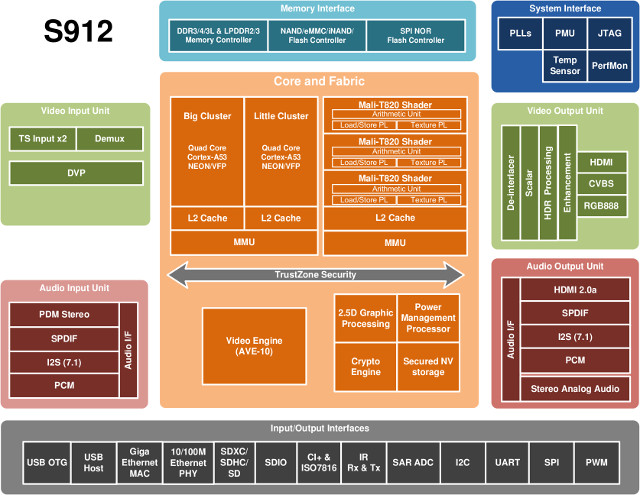We’ve already compared the main features between Amlogic S905, Amlogic S905X and Amlogic S912, with Amlogic S905X being an upgrade of Amlogic S905 with the same quad core Cortex A53 cores and Mali-450MP GPU but adding VP9 hard ware decoding, HDR support, and integrating 10/100 Ethernet PHY and audio codec to lower the cost. The CPU frequency was also said to be lowered to 1.5 GHz in early document, but TV manufacturers keep promoting Amlogic S905 as a 2.0 GHz processor, and I noticed CPU-Z and Antutu also reported the maximum frequency to be 2.02 GHz. In that case the performance should be about the same for both processors. Let’s find out by comparing benchmark results between Amlogic S905 based MINIX NEO U1 (Android 5.1) and Amlogic S905X powered MINI M8S II (Android 6.0) using Antutu 6.x, Vellamo 3.x, and 3DMark Ice Storm Extreme 1.2. A ratio greater than one […]
LibreELEC 7.0 Ported to Amlogic S905 TV Boxes & ODROID-C2 Board
Most TV boxes are now sold pre-loaded with Android, but there’s still a fair amount of people who only want to play videos in their box, or only run Kodi, so they may prefer a Linux experience. Some companies provide ready-to-use solution such as ARNU Box Mach 10 64-bit Pure Linux, but in some cases it’s also possible to side-load OpenELEC or LibreELEC, with the main advantage being that it is usually quite cheaper at the cost of being a bit more complicated. Thanks to a comment by Sabai, I discovered LibreELEC 7.0.0 had been (unofficially) ported to Amlogic S905 TV boxes, and tested one devices such as NEXBOX A95X (S905), WeTek Hub, Beelink S905 Mini MXIII, MXQ Pro 4K, and others. If you own an ODROID-C2 board, you can load another LibreELEC 7.0.0 image. If you are unsure whether your Android TV box is supported, you should first try […]
Amlogic S912(-H) TV Box Boards Are Starting to Show Up
Amlogic S912 is one of the most expected processor this year for TV box users, and while there’s still a few months development needed before devices based on the new platform go on sale, some boards have started to surface on the Internet. The first board named S912_MBX_REF_Q02_V01 is shown above, and has the following specifications: SoC – Amlogic S912 or S912-H octo core ARM Cortex A53 processor @ 2.0GHz with ARM Mali-820MP3 @ 750MHz+ System Memory – 2GB (Optional 1GB) Storage – 16GB eMMC flash (Optional 8GB) + micro SD slot Video Output – HDMI 2.0 and AV ports Audio Output – HDMI, AV, and optical S/PDIF Connectivity – Gigabit Ethernet, WiFi 802.11 b/g/n/ac + Bluetooth 4.0 Misc – IR receiver, recovery push button (behind AV jack) As a reminder the -H suffix means Dolby and DTS licenses are paid for, so audio down-mixing will work in all apps. […]
Does Amlogic S905X Support USB 3.0?
Despite Amlogic roadmap claiming none of the upcoming Amlogic TV box SoCs will support USB 3.0, I’ve been informed that Amlogic S905X might already support USB 3.0. So I had a check with NEXBOX A5 TV box. First we can see dwc3 (DesignWare USB3) module is loaded:
|
1 2 3 4 |
lsmod Module Size Used by dwc3 17981 0 mali 233433 36 |
then this happens when I connect a USB 3.0 hard drive or flash drive:
|
1 2 3 |
[ 4812.378262@0] usb 1-2: new high-speed USB device number 7 using xhci-hcd [ 4812.798557@0] usb-storage 1-2:1.0: USB Mass Storage device detected [ 4812.801416@0] scsi1 : usb-storage 1-2:1.0 |
The important point here is xhci, which stands for “eXtensible Host Controller Interface” and supports USB 1.x to USB 3.x devices. The next step is to check performance, but since S905X is running Android 6.0, I went through permission issues with both A1SD bench and Disk Speed apps, so I reverted to using dd to read a large file to /dev/null. Result with USB 3.0 hard drive:
|
1 2 3 4 |
dd if=Sintel-Bluray.iso of=/dev/null bs=1024*1024*32 47+1 records in 47+1 records out 1593180160 bytes transferred in 42.681 secs (37327620 bytes/sec) |
That’s about 35.6 MB/s, which would be an excellent USB 2.0 transfer rate, but not quite USB 3.0 material, […]
4K VP9 Video Playback in Amlogic S905X based NEXBOX A5 Android TV Box
I’ve never been able to play 4K VP9 videos smoothly in any Android TV boxes so far. It’s possible in Nvidia Shield Android TV, but the device is relatively expensive, and hard to source in many parts of the world, and NEXBOX A5 is the first Android TV Box I own capable of handling 4K VP9 @ 60 fps thanks to Amlogic S905X processor. So I tested 3 4K Vp9 video using MoviePlayer app pre-loaded in the device: 4K Hawaii Sunset _ GoPro Hero 4 Black [email protected] – 3840×2160 resolution @ 30 fps; no audio; ~24 Mbps; Downloaded from YouTube with youtube-dl script phfx_4KHD_VP9TestFootage.webm – 3840×2160 resolution @ 25 fps; no audio; ~14 Mbps The.Curvature.of.Earth.4K.60FPS-YT-UceRgEyfSsc.VP9.3840×2160.OPUS.160K.webm – 3840×2160 resolution @ 60 fps; Opus audio; ~30 Mbps As you’ll see in the video below, the good news is that all three videos could be played relatively smoothly. The not-so-good news are that […]
Hardkernel Releases Amlogic S905 Datasheet
When you design a board and/or write drivers for an SoC it helps a lot to get info about electrical characteristics, memory map, registers’ addresses and values to understand how the hardware works, especially for custom applications, but many silicon vendors only distribute such documents under NDA to their business customers, with exception from companies such as Freescale (now NXP), and Texas Instruments. Hardkernel, the company developing ODROID boards, is also trying to release as much documentation as possible for their board such as Amlogic S805 datasheet for ODROID-C1/C1+ boards, and the Korean company has now released Amlogic S905 processor datasheet as the processor is used in their ODROID-C2 board. Some of the information available in the datasheet include Memory map Power domain CPU and GPU sub-system Clock & Reset Unit System Boot General Purpose Input/Output (GPIO) Interrupt Controller Direct Memory Access Controller (DMAC) Timers Crypto Etc… ODROID-C2 was launched […]
Amlogic S912 Processor Specifications
Amlogic plans to launch at least three new processors for OTT boxes and set-top boxes this year: Amlogic S905X, Amlogic S912, and Amlogic S905D. We already knew Amlogic S905 specifications, but I’ve recently received a document with some more details about Amlogic S912 revealing Mali-T820 GPU, a lack of USB 3.0 support, but still some interesting features such as HDMI 2.0a, 4K VP9, 10-bit H.265, Gigabit Ethernet Mac, and so on. Amlogic S912 specifications with highlights in bold showing differences with Amlogic S905X: CPU Sub-system – Octa core ARM Cortex-A53 CPU up to 2 GHz (DVFS) with two CPU clusters one optimized for high performance (big) and the other for low power (LITTLE) 3D Graphics Processing Unit –ARM Mali-T820MP3 GPU up to 750MHz (DVFS) with 3 shader engines supporting OpenGL ES 1.1/2.03.1, DirectX 11 FL9_3, OpenCL 1.1/1.2 full profile and RenderScript. 2.5D Graphics Processor – Fast bitblt engine with dual […]
Linux 4.5 Released – Main Changes, ARM and MIPS Architectures
Linus Torvalds released Linux Kernel 4.5 on Sunday: So this is later on a Sunday than my usual schedule, because I just couldn’t make up my mind whether I should do another rc8 or not, and kept just waffling about it. In the end, I obviously decided not to,but it could have gone either way. We did have one nasty regression that got fixed yesterday, and the networking pull early in the week was larger than I would have wished for. But the block layer should be all good now, and David went through all his networking commits an extra time just to make me feel comfy about it, so in the end I didn’t see any point to making the release cycle any longer than usual. And on the whole, everything here is pretty small. The diffstat looks a bit larger for an xfs fix, because that fix has […]


